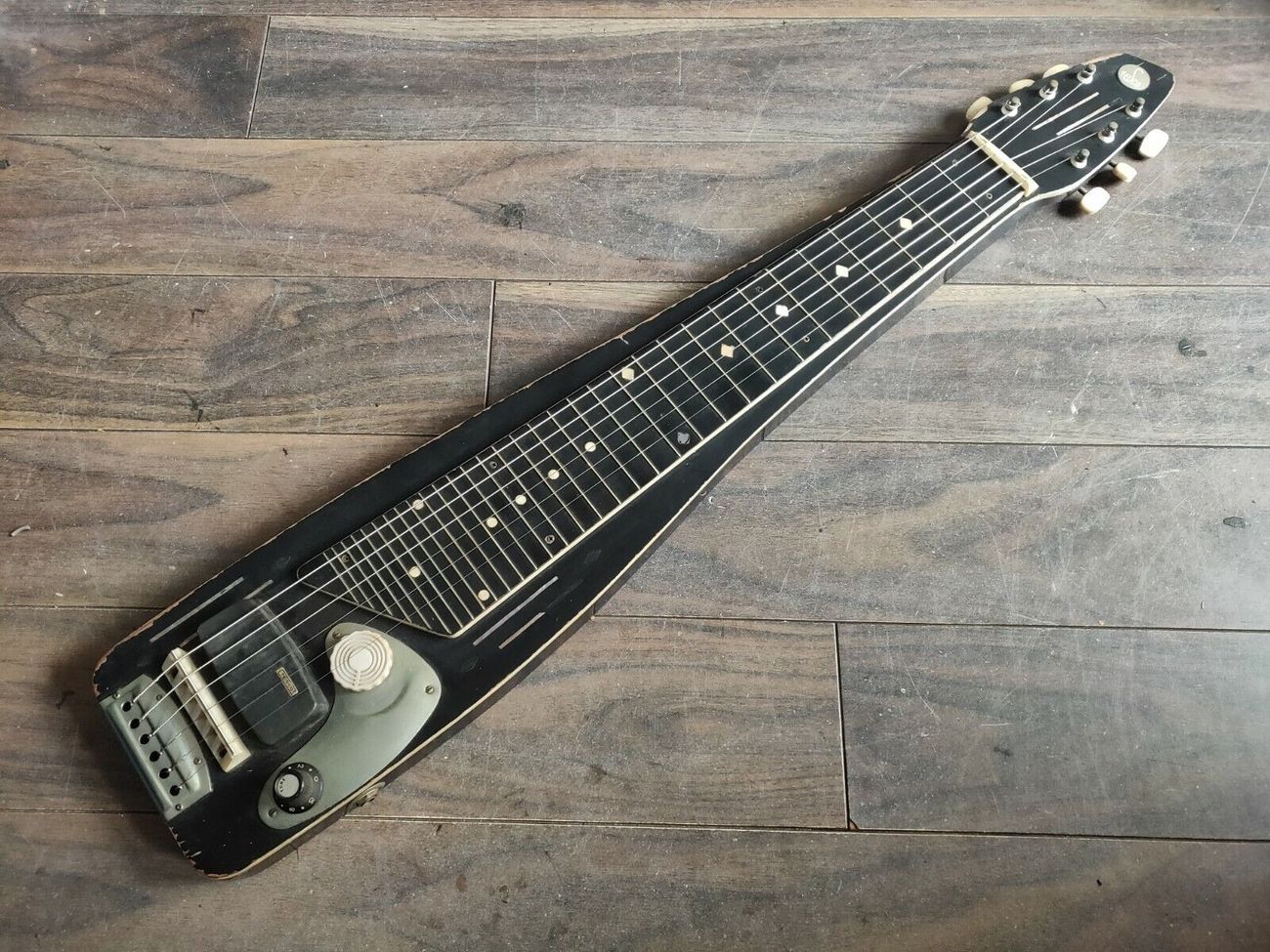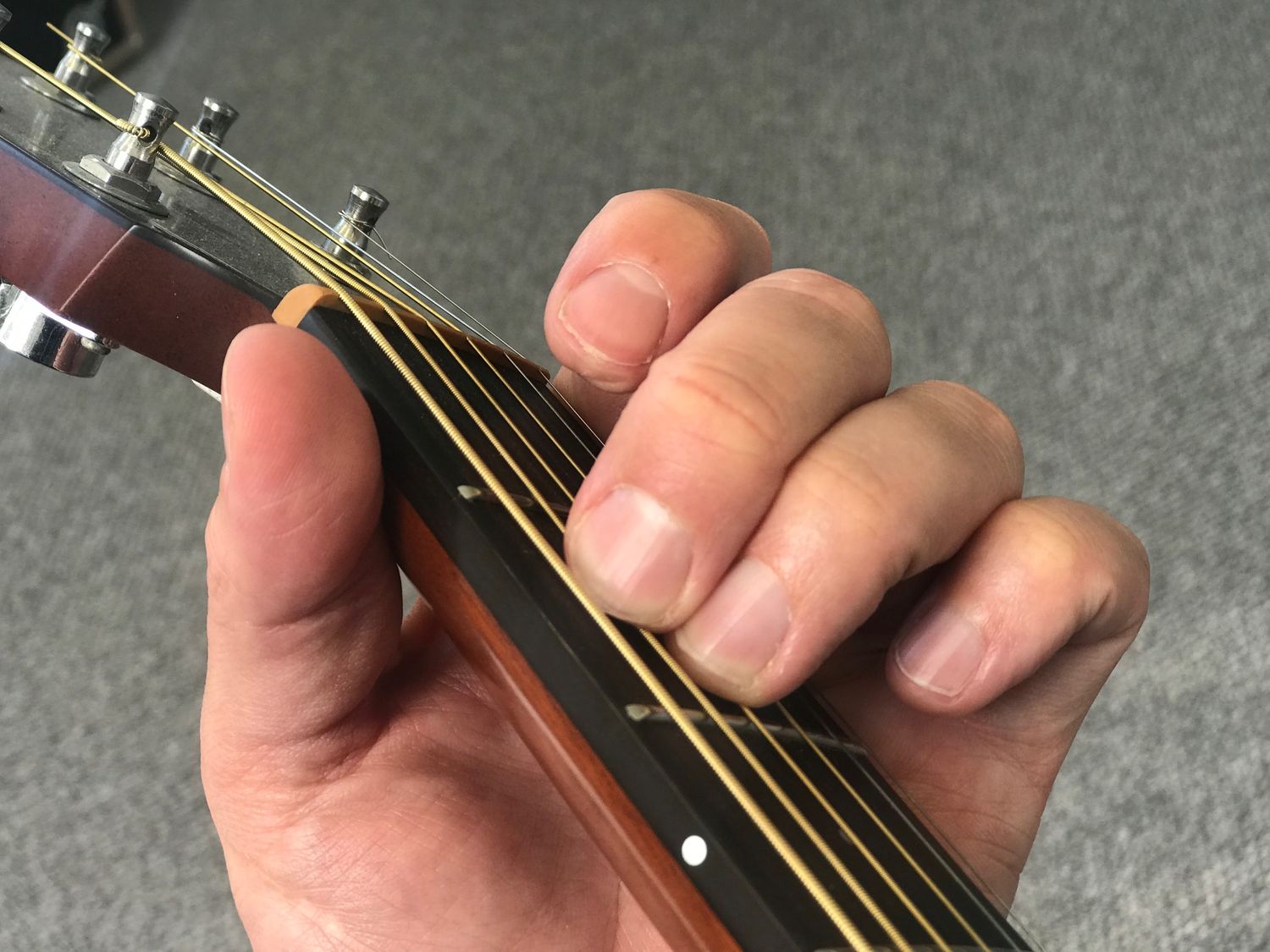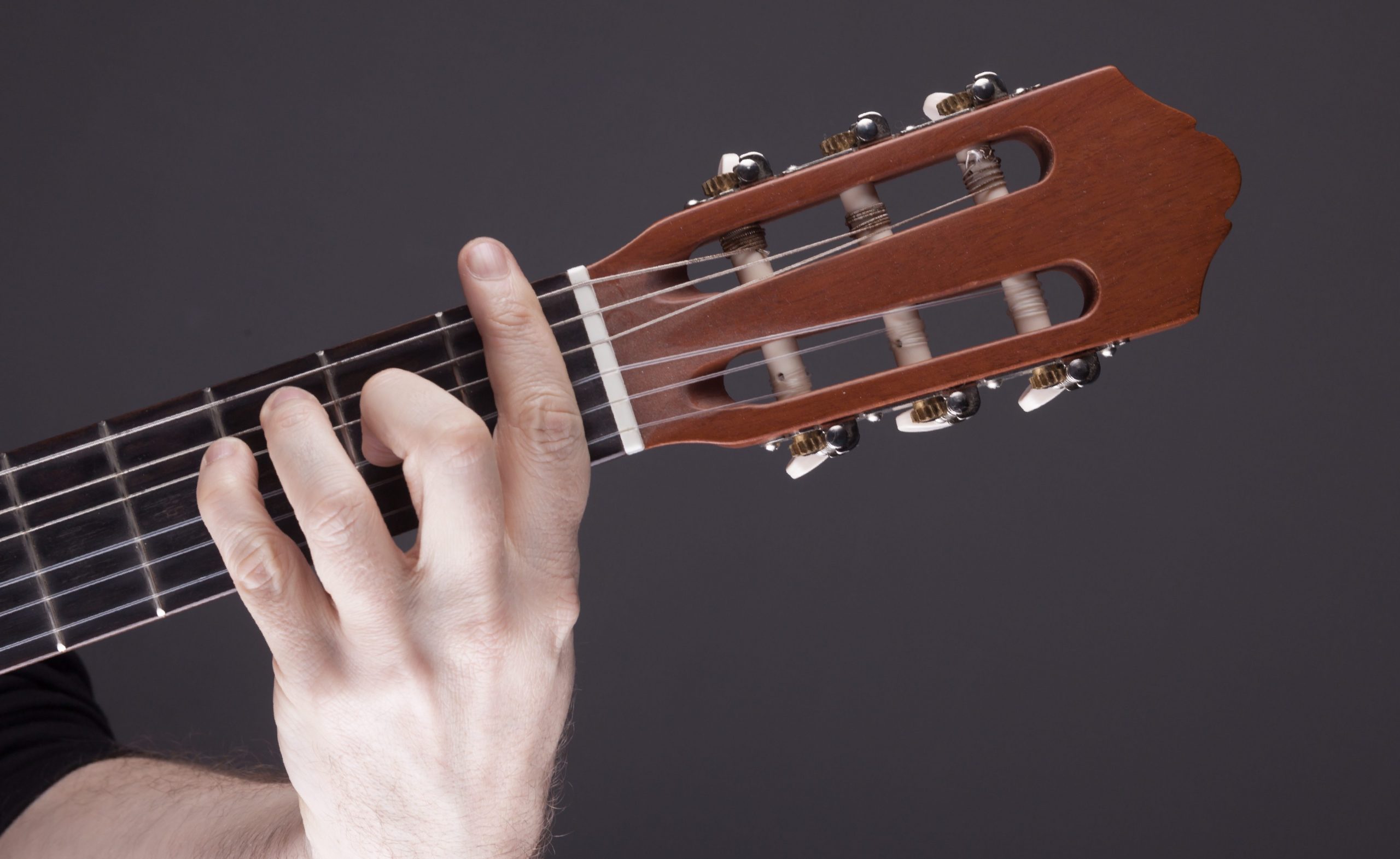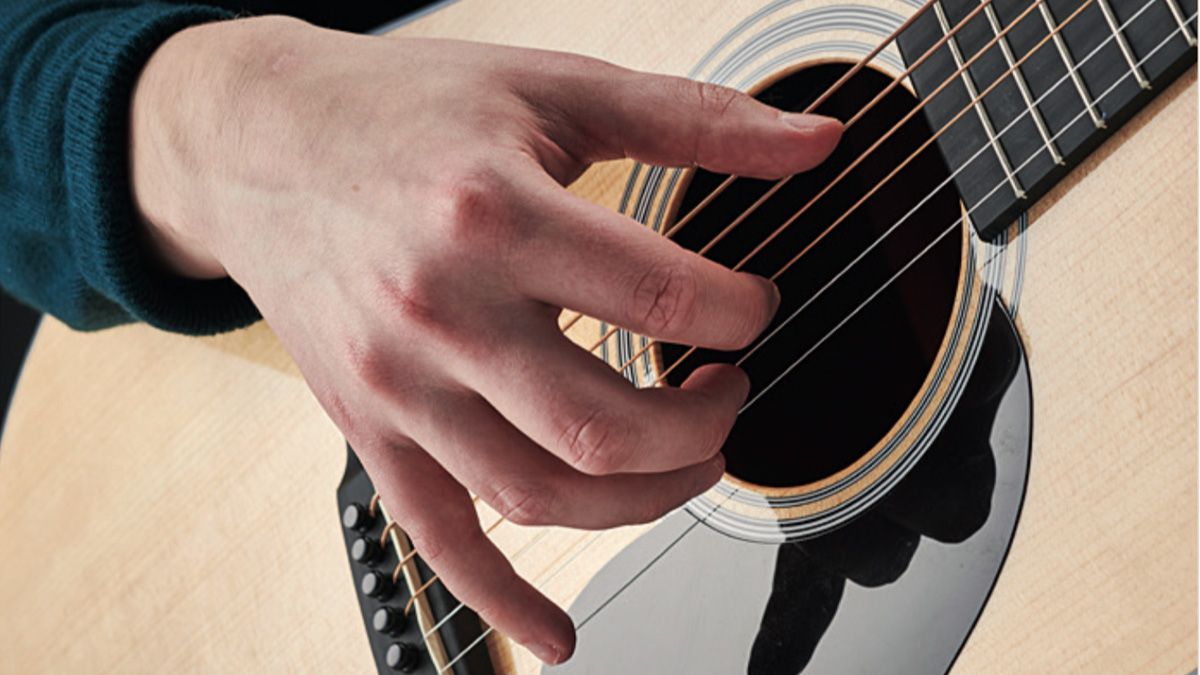Home>Instruments>Guitar>How To Play A Steel Guitar


Guitar
How To Play A Steel Guitar
Published: February 13, 2024
Learn how to play a steel guitar with our comprehensive guide. Master the techniques and become a pro at playing the guitar. Unlock your potential today!
(Many of the links in this article redirect to a specific reviewed product. Your purchase of these products through affiliate links helps to generate commission for AudioLover.com, at no extra cost. Learn more)
Table of Contents
Introduction
Introduction
Playing the steel guitar is a soulful and captivating musical journey that allows you to express a wide range of emotions through its melodious tones. Whether you're drawn to the classic country sounds of legends like Jerry Byrd and Buddy Emmons or the contemporary stylings of Robert Randolph and Cindy Cashdollar, mastering the steel guitar can be a deeply rewarding experience. This article will guide you through the essential steps to get started on this unique instrument, from selecting the right steel guitar to mastering basic techniques and beyond.
The steel guitar, with its distinctive sliding action and rich, sustained notes, has been a cornerstone of various musical genres, including country, Hawaiian, and blues. Its unique sound is achieved by sliding a steel bar or metal slide along the strings, producing smooth glissandos and emotive bends that set it apart from traditional guitars. Whether you're a seasoned guitarist looking to expand your sonic palette or a newcomer to stringed instruments, the steel guitar offers a fresh and exciting avenue for musical exploration.
Throughout this guide, you'll learn about the different types of steel guitars, the fundamental techniques for playing, and the various tools and accessories that can enhance your sound. Additionally, you'll discover valuable tips for practicing effectively and honing your skills, as well as insights into creating captivating melodies and solos. By the end of this journey, you'll have a solid foundation for playing the steel guitar and be well-equipped to embark on your own musical odyssey.
So, whether you're drawn to the melancholic wails of a pedal steel in a classic country ballad, the shimmering tones of a lap steel in Hawaiian music, or the searing slide guitar in blues, this guide will equip you with the knowledge and skills to begin your steel guitar adventure. Let's dive into the world of steel guitar and unlock the secrets of its enchanting sound.
Choosing the Right Steel Guitar
When embarking on your steel guitar journey, selecting the right instrument is crucial to achieving the desired sound and playability. There are several types of steel guitars, each with its own unique characteristics and sonic capabilities. Understanding the differences between these instruments will help you make an informed decision based on your musical preferences and playing style.
One of the most common types of steel guitars is the pedal steel, which features foot pedals and knee levers that allow players to change the pitch of certain strings while playing. This versatility makes the pedal steel well-suited for creating intricate melodies and harmonies, making it a popular choice in country and western swing music. On the other hand, the lap steel guitar, which is played horizontally across the player’s lap, is favored for its smooth, gliding sound and is commonly associated with Hawaiian and blues music.
Another consideration when choosing a steel guitar is whether to opt for a traditional acoustic model or an electric one. Acoustic steel guitars produce a warm and natural tone, making them ideal for intimate performances and traditional genres. In contrast, electric steel guitars offer greater versatility in tone and volume control, making them suitable for a wide range of musical styles and performance settings.
When evaluating steel guitars, factors such as the number of strings, scale length, and string spacing should also be taken into account. Instruments with more strings provide extended range and harmonic possibilities, while those with shorter scale lengths may offer easier playability, especially for beginners. Additionally, the spacing between strings can impact the ease of fretting and sliding, so finding a comfortable string spacing is essential for developing your technique.
Whether you’re drawn to the evocative twang of a pedal steel or the soulful resonance of a lap steel, investing in a high-quality instrument that resonates with your musical aspirations is paramount. By carefully considering the type, construction, and sonic characteristics of different steel guitars, you can ensure that your chosen instrument becomes a faithful companion on your musical journey, inspiring and empowering you to explore the expressive depths of this captivating instrument.
Tuning Your Steel Guitar
Properly tuning your steel guitar is essential for achieving the distinct and resonant tones that define its captivating sound. Unlike standard guitars, the tuning of a steel guitar often varies depending on the player’s musical preferences and the specific requirements of different genres. Understanding the common tunings used in steel guitar playing will provide you with a solid foundation for exploring various musical styles and crafting your own unique sound.
One of the most prevalent tunings for pedal steel guitars is the E9 tuning, which is favored for its versatility and melodic possibilities. This tuning, often utilized in country and western swing music, features a straightforward arrangement of intervals that facilitates smooth chord changes and intricate melodic passages. Additionally, the C6 tuning is popular among steel guitarists for its rich, resonant quality and its suitability for playing jazz, blues, and Hawaiian music.
For lap steel guitars, open tunings are commonly employed to produce lush, ringing chords and emotive slide melodies. Open tunings such as D6 (DADF#AD) and G6 (GBDGBD) provide a harmonically rich foundation, allowing players to effortlessly create expressive phrases and vibrant harmonies. These tunings are particularly well-suited for capturing the evocative sounds of Hawaiian music and blues slide guitar.
Regardless of the tuning you choose, ensuring that your steel guitar is accurately and precisely tuned is crucial for producing clear and resonant tones. Utilizing a reliable electronic tuner or tuning pedal can aid in achieving precise pitch accuracy, especially when working with the complex string arrangements and multiple necks found in pedal steel guitars. Additionally, regularly checking and adjusting the intonation of your instrument will help maintain consistent tuning across the fretboard, ensuring that your playing remains in tune and harmonious.
As you delve into the captivating world of steel guitar, experimenting with various tunings and exploring their unique sonic characteristics will broaden your musical horizons and inspire creative expression. Whether you’re drawn to the emotive laments of country pedal steel or the soul-stirring melodies of lap steel blues, mastering the art of tuning your steel guitar will unlock a world of sonic possibilities and empower you to craft your own musical narrative.
Holding and Positioning the Steel Guitar
Proper positioning and posture are fundamental aspects of playing the steel guitar effectively and comfortably. Unlike traditional guitars, the steel guitar is played horizontally, either on a stand or across the player’s lap. Understanding the optimal positioning and physical approach to the instrument is essential for achieving fluid and expressive playing while minimizing physical strain and discomfort.
For players using a pedal steel guitar, a sturdy and adjustable seat is essential for maintaining a comfortable playing posture. The seat should allow the player to reach the pedals and knee levers easily while maintaining a relaxed and balanced sitting position. Additionally, the height and angle of the instrument’s neck and body should be adjusted to suit the player’s reach and playing style, ensuring that the strings are easily accessible and the player can execute smooth and precise movements.
When playing a lap steel guitar, finding a comfortable and stable playing position is crucial for achieving fluid slide movements and fretting. Using a supportive and adjustable guitar stand or lap steel stand can help elevate the instrument to an optimal height, allowing the player to maintain a relaxed and natural posture while playing. Additionally, positioning the instrument at a slight angle can enhance visibility and access to the strings, facilitating effortless slide and fretting techniques.
Regardless of the type of steel guitar being played, maintaining proper posture and hand positioning is essential for minimizing physical strain and maximizing playing dexterity. Ensuring that the player’s back is well-supported and maintaining a relaxed and upright posture can prevent discomfort and fatigue during extended playing sessions. Moreover, positioning the hands and arms in a natural and ergonomic manner will facilitate smooth and precise slide movements, chord changes, and string manipulations.
By paying attention to the physical ergonomics of playing the steel guitar and adopting a posture that promotes comfort and fluidity, players can enhance their playing experience and focus on expressing themselves musically. Whether you’re captivated by the emotive sounds of a pedal steel or the soulful resonance of a lap steel, mastering the art of holding and positioning the steel guitar will empower you to play with confidence, ease, and expressiveness.
Basic Techniques for Playing
Mastering the fundamental techniques for playing the steel guitar is essential for developing a nuanced and expressive playing style. Whether you’re drawn to the emotive bends of pedal steel, the fluid slides of lap steel, or the soul-stirring melodies of slide guitar, understanding and practicing these core techniques will lay the groundwork for your musical journey.
One of the fundamental techniques in steel guitar playing is slide articulation. Utilizing a metal slide or steel bar, players can produce smooth glissandos, emotive bends, and vibrant vibrato, imbuing their playing with a distinctive and expressive character. Practicing precise slide movements and controlling the pressure applied to the strings will enable players to achieve clear and resonant notes while exploring the instrument’s sonic capabilities.
Additionally, mastering the art of chord and harmony voicings is crucial for creating lush and evocative accompaniments on the steel guitar. Understanding the principles of chord construction and voicing will empower players to craft rich and harmonically diverse progressions, enhancing the expressive potential of the instrument and complementing vocal melodies and instrumental arrangements.
For players of pedal steel guitars, developing proficiency in utilizing foot pedals and knee levers is essential for navigating complex chord changes and melodic passages. Learning to engage these mechanisms with precision and control will enable players to seamlessly modulate pitch, alter chord voicings, and execute emotive pedal steel phrases with finesse and musicality.
Furthermore, honing the skill of string blocking and muting is crucial for achieving clean and articulate playing on the steel guitar. By selectively muting or dampening strings with the picking hand or palm, players can eliminate unwanted string noise and enhance the clarity and definition of their playing, ensuring that each note and phrase resonates with precision and clarity.
As you embark on your steel guitar journey, dedicating time to mastering these foundational techniques will provide you with a solid framework for musical expression and creative exploration. Whether you’re captivated by the soulful laments of lap steel or the intricate harmonies of pedal steel, honing these basic techniques will empower you to craft captivating melodies, expressively rich chords, and soul-stirring performances on the steel guitar.
Learning Chords and Scales
Developing proficiency in chords and scales is integral to unlocking the expressive potential of the steel guitar and expanding your musical vocabulary. Whether you’re drawn to the lush harmonies of Hawaiian music, the emotive twang of country pedal steel, or the soul-stirring melodies of blues slide guitar, mastering these foundational elements will enrich your playing and enable you to craft captivating musical compositions and improvisations.
One of the primary chord voicings utilized in steel guitar playing is the barre chord, which involves fretting all strings across a single fret with the slide or a finger, allowing players to produce full and resonant chords. Mastering various barre chord shapes and voicings across the fretboard will provide you with a versatile palette for crafting rich and harmonically diverse chord progressions, enhancing the expressive potential of the instrument.
Additionally, familiarizing yourself with open tunings and their associated chord shapes can expand your harmonic possibilities and facilitate fluid chord transitions and voicings. Open tunings such as D6 (DADF#AD) and G6 (GBDGBD) for lap steel guitars and E9 and C6 tunings for pedal steel guitars offer unique and evocative chord voicings, enabling players to create lush and resonant harmonies with ease and expressiveness.
Furthermore, delving into scale patterns and melodic sequences is essential for developing melodic fluency and improvisational prowess on the steel guitar. Practicing scale patterns such as the major scale, minor pentatonic scale, and blues scale across the fretboard will enhance your ability to craft soul-stirring melodies, expressive solos, and emotive slide phrases, imbuing your playing with depth and musicality.
For players of pedal steel guitars, mastering the art of harmonized scale passages and pedal-steel-specific scale patterns is crucial for navigating complex melodic arrangements and creating captivating harmonized melodies. Understanding the interplay between foot pedals, knee levers, and scale patterns will empower players to craft intricate and emotive melodic passages with finesse and musical expression.
By devoting time to learning and internalizing chord voicings, scale patterns, and harmonic principles, you’ll expand your musical horizons and cultivate a rich and expressive approach to playing the steel guitar. Whether you’re captivated by the shimmering harmonies of lap steel or the intricate melodic passages of pedal steel, mastering chords and scales will equip you with the tools to craft evocative compositions, soul-stirring solos, and captivating musical narratives on the steel guitar.
Playing Melodies and Solos
Mastering the art of playing melodies and solos on the steel guitar is a deeply rewarding endeavor that allows you to express a wide range of emotions and musical nuances. Whether you’re drawn to the soulful laments of lap steel blues, the intricate harmonies of pedal steel, or the evocative melodies of Hawaiian music, developing proficiency in crafting captivating melodies and expressive solos will elevate your playing to new heights of musicality and artistry.
One of the key elements of playing melodies and solos on the steel guitar is the art of phrasing. By carefully shaping and articulating each note and phrase, players can imbue their melodies with emotive nuances and expressive character, creating captivating musical narratives that resonate with listeners. Utilizing techniques such as vibrato, slides, and bends allows players to infuse their melodies with soul-stirring dynamics and evocative tonal shifts.
For players of lap steel guitars, exploring the expressive potential of slide techniques is integral to crafting soulful and emotive melodies. By deftly executing slide movements and glissandos, players can evoke a wide range of emotions and musical textures, infusing their melodies with a distinctive and resonant quality that captivates listeners and conveys profound musical expression.
Additionally, for pedal steel guitarists, mastering the art of harmonized melodies and pedal-steel-specific techniques is essential for creating intricate and evocative solo passages. By leveraging the instrument’s foot pedals and knee levers to modulate pitch and alter chord voicings, players can craft harmonically rich and melodically diverse solos that captivate and enthrall audiences, showcasing the expressive potential of the pedal steel guitar.
Moreover, developing an understanding of melodic phrasing and solo construction empowers players to craft captivating and memorable musical narratives that resonate with listeners. By exploring various melodic motifs, thematic development, and emotive dynamics, players can create solos that not only showcase technical prowess but also convey profound musical expression and storytelling, leaving a lasting impression on audiences.
By dedicating time to honing the art of playing melodies and solos on the steel guitar, you’ll unlock a world of expressive potential and musical storytelling. Whether you’re captivated by the soulful resonance of lap steel or the intricate harmonies of pedal steel, mastering the art of crafting captivating melodies and evocative solos will empower you to convey profound emotions and musical narratives through your playing, captivating and inspiring listeners with the expressive power of the steel guitar.
Using Effects and Accessories
Exploring the realm of effects and accessories opens up a world of sonic possibilities and creative expression for steel guitar players. Whether you’re seeking to enhance the tonal palette of your instrument, shape your sound with expressive effects, or optimize your playing comfort and convenience, integrating effects and accessories into your setup can elevate your playing experience and expand your sonic horizons.
One of the foundational accessories for steel guitar players is the steel bar or slide, which is essential for producing the characteristic glissandos, emotive bends, and vibrant vibrato that define the instrument’s expressive potential. Choosing a steel bar that suits your playing style and tonal preferences, whether it’s a solid steel, chrome-plated, or ceramic model, can significantly impact the articulation and character of your playing, allowing you to craft nuanced and expressive phrases with ease.
Additionally, incorporating effects pedals such as reverb, delay, and tremolo into your steel guitar setup can enrich your sound with atmospheric textures and expressive timbral shifts. Utilizing these effects can imbue your playing with lush spatial dimensions, evocative echoes, and pulsating modulations, adding depth and emotive resonance to your performances and compositions.
For players of pedal steel guitars, integrating volume pedals and expression pedals into their setup enables precise control over dynamics and tonal shaping, allowing for seamless swells, nuanced volume control, and expressive pitch modulation. These pedals empower players to craft emotive and dynamic performances, sculpting their sound with finesse and musicality.
Furthermore, exploring accessories such as tone bars with built-in palm and finger grips, ergonomic guitar stands, and comfortable seating options can enhance playing comfort and physical ergonomics, minimizing fatigue and strain during extended practice and performance sessions. Prioritizing playing comfort and convenience through well-chosen accessories can contribute to a more enjoyable and sustainable playing experience.
By embracing the creative potential of effects and accessories, steel guitar players can sculpt their sound, optimize their playing comfort, and expand their sonic palette, unlocking new realms of expressive potential and creative exploration. Whether you’re captivated by the soulful resonance of lap steel or the intricate harmonies of pedal steel, integrating effects and accessories into your playing setup will empower you to craft captivating performances and compositions, imbuing your music with depth, expression, and sonic allure.
Tips for Practicing and Improving
Mastering the steel guitar is a journey that requires dedication, patience, and a commitment to continuous improvement. Whether you’re a novice exploring the instrument’s expressive potential or a seasoned player seeking to refine your skills, incorporating effective practice strategies and embracing a mindset of continual growth is essential for honing your craft and expanding your musical horizons.
Consistent and focused practice is key to developing proficiency on the steel guitar. Establishing a regular practice routine, even if it’s for a short duration each day, can yield significant progress over time. Setting specific practice goals, whether it’s mastering a new technique, learning a challenging passage, or improvising over a backing track, provides a clear direction for your practice sessions and fosters a sense of accomplishment as you achieve each goal.
Exploring diverse musical styles and genres can broaden your musical vocabulary and inspire creative expression. Whether it’s delving into the emotive sounds of blues, the lush harmonies of Hawaiian music, or the intricate melodies of jazz, immersing yourself in varied musical traditions can enrich your playing and expand your sonic palette, nurturing a versatile and expressive approach to the steel guitar.
Listening to and studying recordings of accomplished steel guitarists can provide valuable insights and inspiration for your own playing. Analyzing their phrasing, tone, and expressive techniques can deepen your understanding of the instrument and inspire new approaches to crafting melodies, solos, and accompaniments. Additionally, seeking out instructional resources, such as books, online tutorials, and educational materials, can offer valuable guidance and technical insights to support your learning journey.
Embracing a mindset of curiosity, experimentation, and resilience is essential for continual growth as a steel guitar player. Embracing challenges, learning from setbacks, and maintaining a spirit of creative exploration can fuel your musical development and empower you to overcome obstacles with determination and adaptability.
Finally, seeking opportunities for collaboration and performance, whether it’s jamming with fellow musicians, participating in open mic nights, or recording your own compositions, can provide valuable avenues for applying and refining your skills in real-world musical contexts. Embracing these opportunities can foster confidence, musical camaraderie, and a sense of accomplishment as you share your passion for the steel guitar with others.
By integrating these tips into your practice regimen and musical journey, you can cultivate a disciplined and creative approach to mastering the steel guitar, nurturing your skills, and expressing your unique musical voice with confidence and artistry.
Conclusion
Congratulations on embarking on the captivating journey of mastering the steel guitar. Throughout this guide, we’ve delved into the essential aspects of playing this unique and expressive instrument, from selecting the right steel guitar to mastering fundamental techniques, exploring diverse musical styles, and embracing effective practice strategies. As you continue to hone your skills and expand your musical horizons, remember that the steel guitar is not merely a musical instrument but a conduit for profound expression and storytelling.
Whether you’re captivated by the soulful resonance of lap steel, the intricate harmonies of pedal steel, or the emotive melodies of slide guitar, the steel guitar offers a rich tapestry of sonic possibilities and expressive potential. By immersing yourself in diverse musical traditions, refining your technique, and embracing a spirit of creative exploration, you’ll unlock new realms of musical expression and craft captivating performances that resonate with depth and emotion.
As you navigate the intricacies of tuning, chord voicings, scale patterns, and effects, remember that your musical journey is a deeply personal and evolving narrative. Embrace the challenges, celebrate the breakthroughs, and remain open to the endless possibilities for growth and creative expression. Whether you’re practicing in the comfort of your home, collaborating with fellow musicians, or captivating audiences on stage, let your passion for the steel guitar shine through in every note and phrase.
Above all, cherish the joy of playing and the profound connections that music fosters. The steel guitar is not only a vehicle for individual expression but a bridge that connects hearts and souls through the universal language of music. As you continue to explore the expressive depths of the steel guitar, may your journey be filled with inspiration, creativity, and the enduring thrill of musical discovery.
So, with each resonant chord, emotive slide, and soul-stirring melody, may you weave your own musical tapestry and share the enchanting voice of the steel guitar with the world. Your unique musical narrative awaits, and the steel guitar stands as your faithful companion on this wondrous odyssey of sound and expression.











